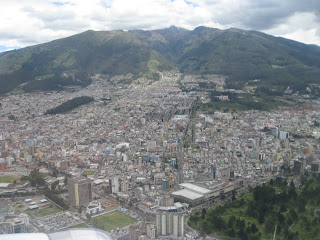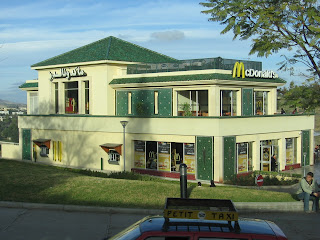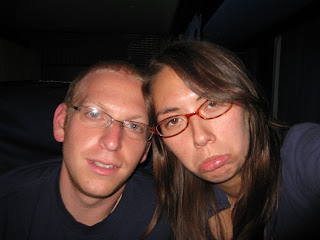
Living at high altitude in the Andes could certainly make things difficult, but you have to give credit where it’s due and admit that made life pretty interesting at times. So walking up the stairs could often be draining and beers often exploded for no reason, but that wasn’t the worst thing in the world. For a few days you would go down to sea level and realize just how much effect the elevation had on you. Suddenly you could run longer and faster and blow away your friends, or simply feel better.
I didn’t start out running when I got to Cuenca, but after a few months of walking everywhere and then realizing that I felt fine after running around, I started to get into it. I also had the time to do so, working only 20 hours a week. But by the end of the year in Ecuador, I had run in a 10k and a 15k. Both at high altitude. Not bad for a guy who never used to run.
Upon my arrival in the United States for a 3 week vacation, I continued to run and enjoyed the effects of high altitude training for about 2 weeks until they wore off. I was able to run more for an extended period of time than I ever had before, and if it wasn’t for my legs getting tired, my lungs could have kept going. Reading about different cities or hiking route altitudes, I judge it off my own experiences. 4,000 feet and under=a baby hill, 5,000-7,000 feet=off to a good start, 8,000-10,000 feet=Ok, that’s pretty sweet, and 11,000 feet+=balls to the wall, dude.
But now, living in Buenos Aires, I’m at sea level again. Life is just so boring at sea level. It’s all so regular. Back in Quito, we used to say that anything that happens can be blamed on the altitude. How do you blame a spilled beer at sea level? Simple, you’re an idiot. And it’s not just that. Even when I wasn’t running in Cuenca I was still getting exercise. Walking was good enough, and just simple things amounted to more work for the heart than it would normally get. This helped me lose all of the weight that I did throughout the year there.
So far in Argentina I haven’t gone for a run. Time has been tight, especially now that I work over 40 hours a week, and it’s tough finding a good park in the center. Running on the streets would be madness unless it was late night or early morning. There are definitely parks here, of that I’m sure. And I’ve read that Palermo is known for their parks, but so far I haven’t been to them. But once I get settled I would like to try to get some sort of schedule going.
However, this city is too large for me to be able to take a daily run. I would have to rush to the Subte, get up to Palermo, get to the park, run, and come back with the same process. We’re talking close to 2 hours in total probably, after a 9 hour work day. It’s just not feasible. But maybe I can pull that off once or twice a weekend, or during the week as well in the summer when there is more daylight.
I still walk to work—about 25 minutes or so—but it’s not the same kind of exercise it was in Cuenca because it’s at sea level. Though it does beat standing on a bus for 40 minutes in rush hour traffic. I do miss running, and I miss being able to feel like no matter what else happens in the day, you’ve already accomplished something. I don’t know if I’ll ever live at high altitude again, but I’ll always be able to think back to when I used to run around with ease at almost 9,000 feet above sea level.
Above: Quito, over 9,000 feet above sea level






 fedepo18
fedepo18





















